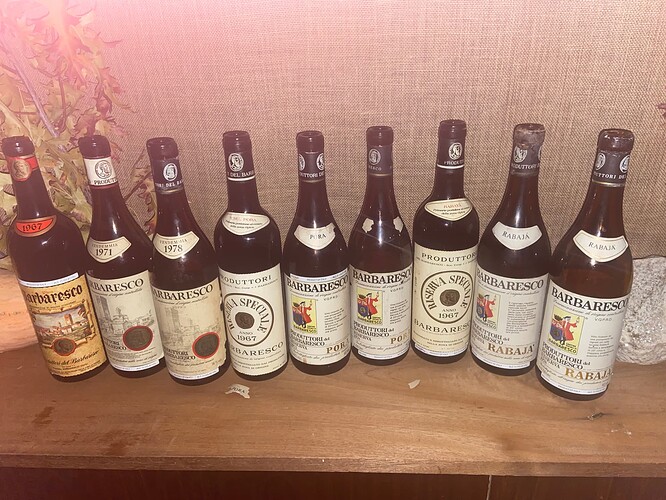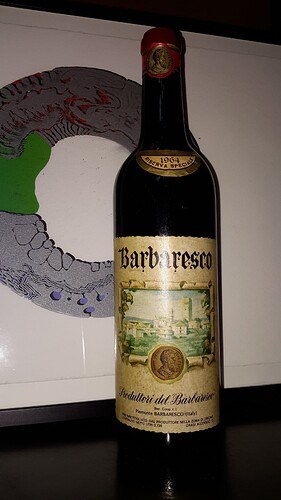Unfortunately, I did not take detailed notes, but figured I would mention the little that I could.
I posted more detailed notes on the 1967 PdB Normale that can be found at https://www.wineberserkers.com/t/2011-tunina-1967-pdb-normale/289817
It was interesting having these side by side. They were tasted with 3 glasses 1 vintage at a time starting with the 67s. Rabaja and Pora are quite contrasting sites. Rabaja is known for complexity and richness, while Pora for its soft tannins from the high humidity in the soil.
The 67s - these tasted quite mature but all showed really well.
The normale is likely fading, but wonderful now.(See other link above for details)
The Pora is incredibly graceful and with great acidity. I would say my wine of the night.
The Rabaja, as one would expect was much firmer, but still more like the other 67s than it was like the other Rabajas
The 71s-
It was interesting to get into the 71s, as they were so very different from the 67s. The color was much darker, especially for the Pora and Rabaja. The wines were much more potent as the color would suggest. There was quite a bit of hazelnut on both the nose and palate as well, while licorice became a bit more apparent, though far from non existent in the 67s. They all matched their identity relative to each other. The Pora was the most delicate and again my personal favorite of the 3, followed closely by the more potent Rabaja. The normale was excellent, but did not quite keep up with the 2 single vineyards like the 67 did.
The 78s-
These were again a bit darker and even richer than the 71s. They all matched their expected profiles. The hazelnut was much less apparent. These were quite tannic, and seemed pretty young. They were the most masculine of the 3 vintages, and in all honesty, if I owned these, I would not touch them yet, not even the Normale. All 3 could use a few more years of cellaring. They are excellent, but still have time to evolve, especially the Rabaja.
One thing I learned is that I have a pretty clear preference toward Pora, so time for me to stock up a bit more!
I did go back afterwards, and put the 3 Pora sbs. I loved all, and lean slightly towards the 67. It was incredible how different they were with just a few years, yet how much they kept their identity at the same time.

